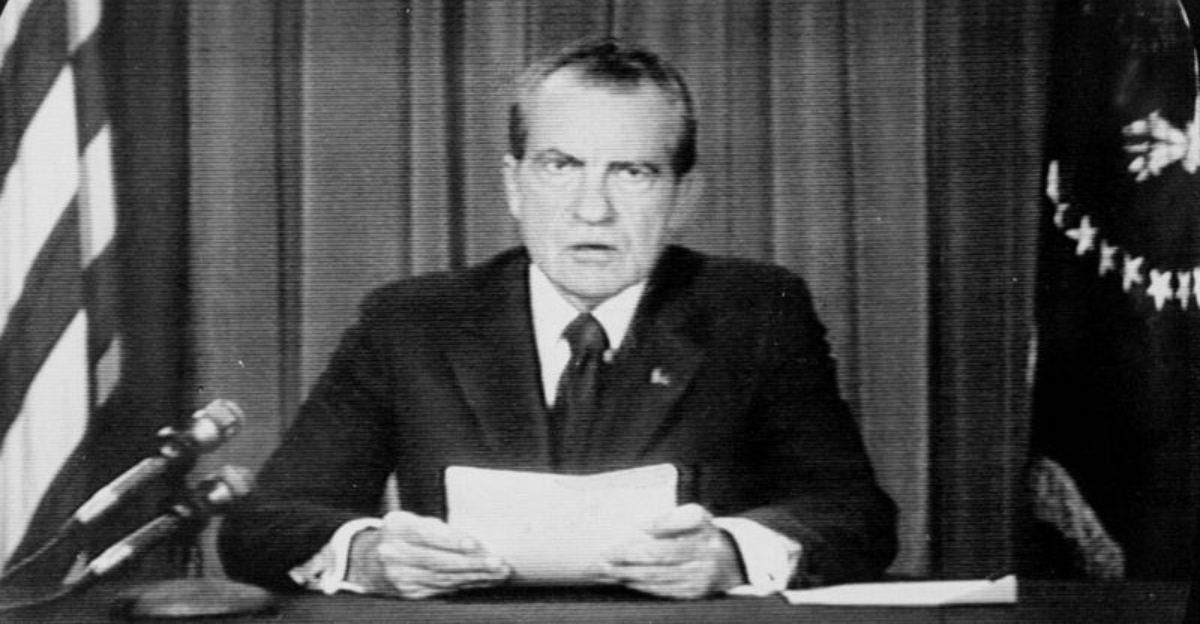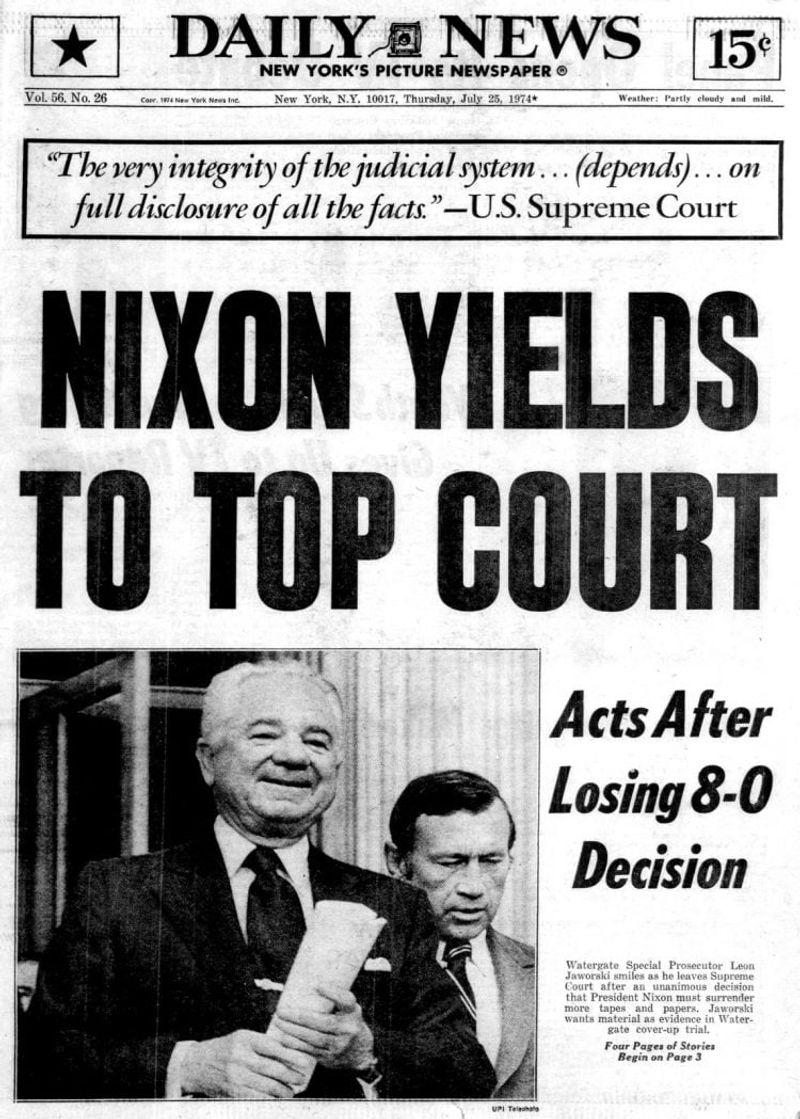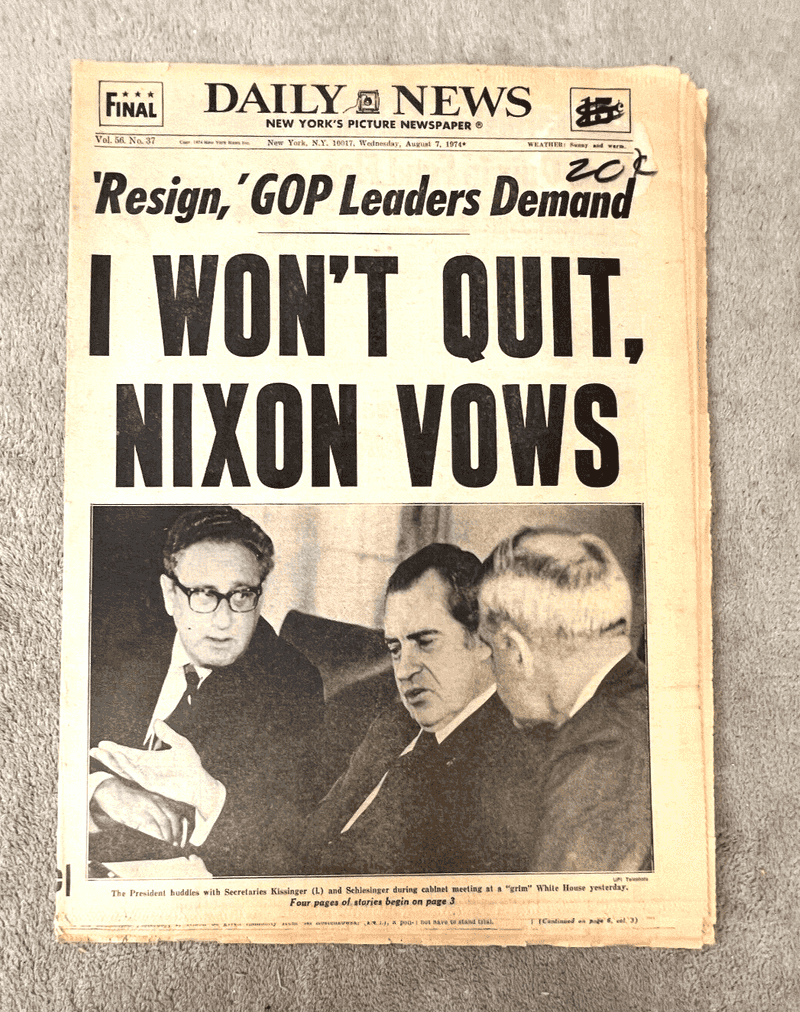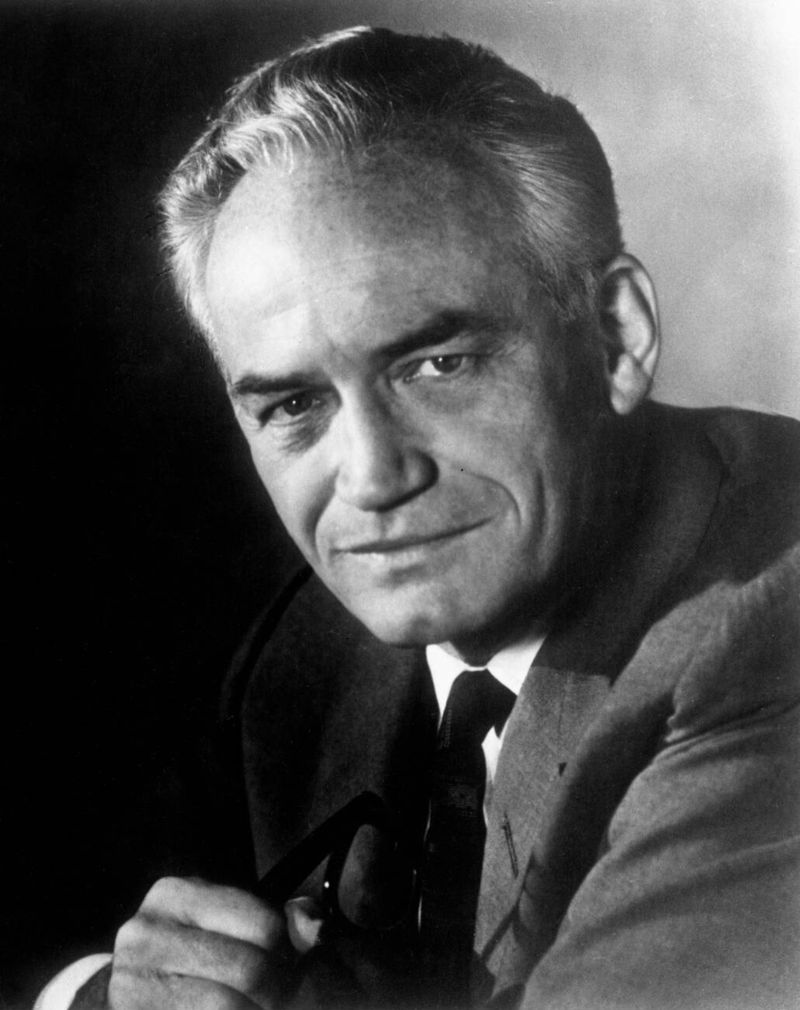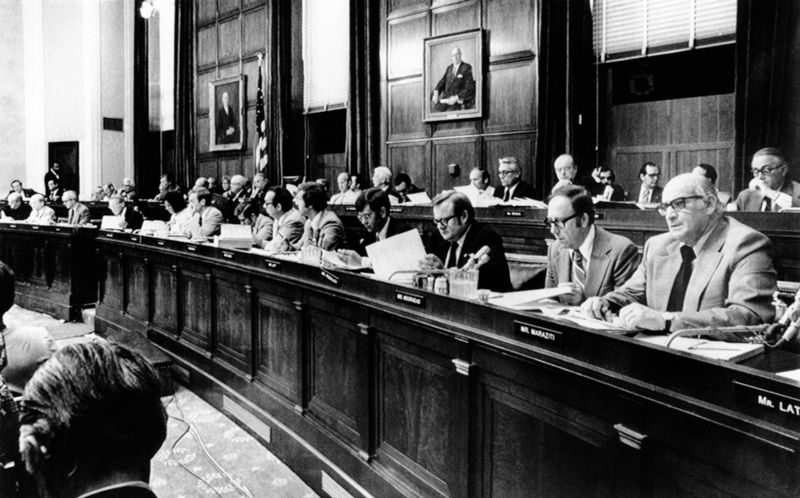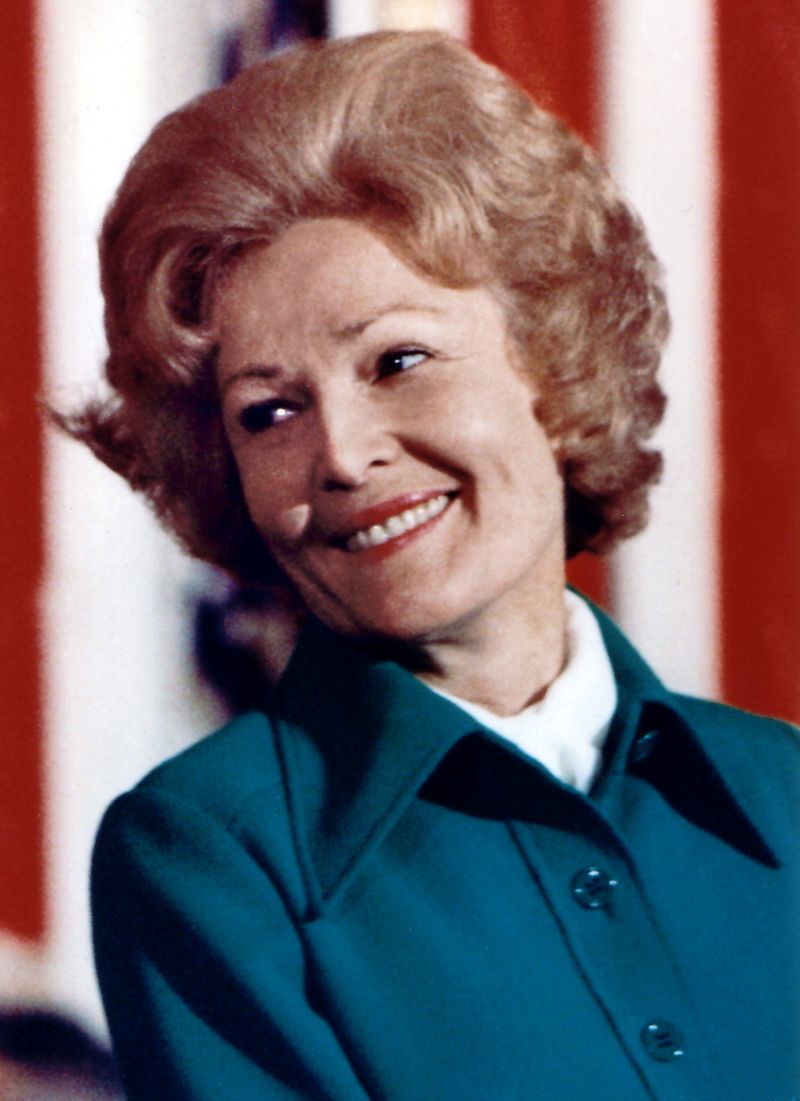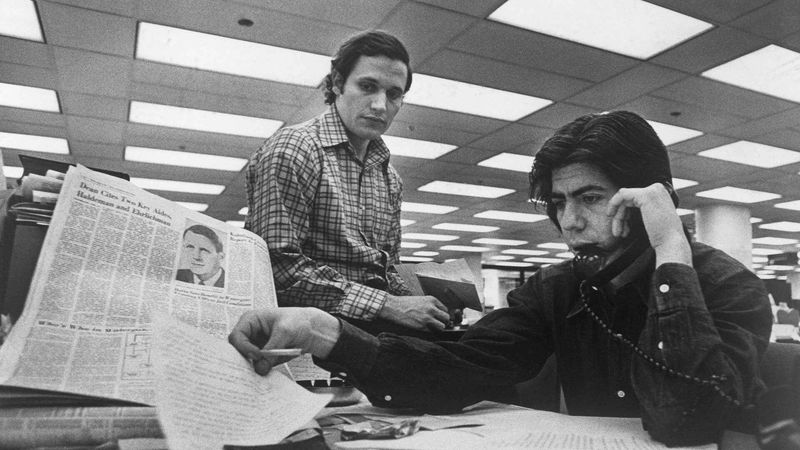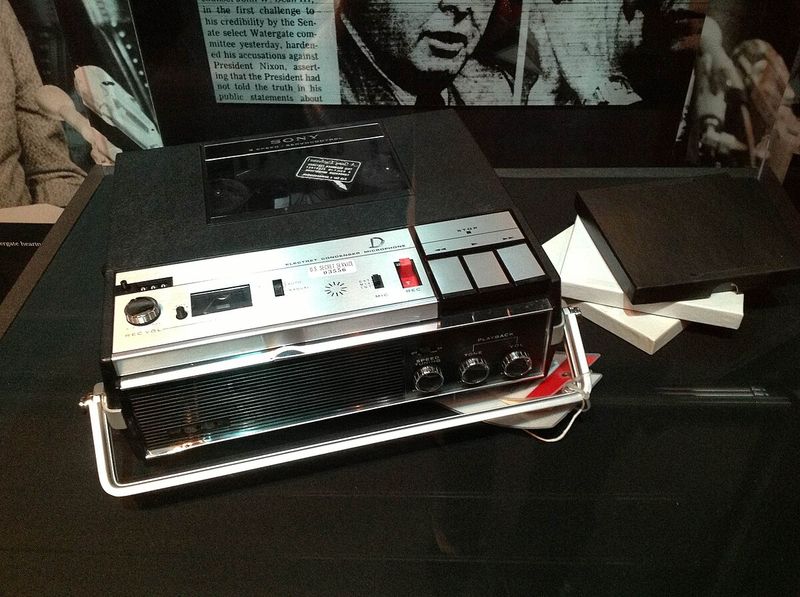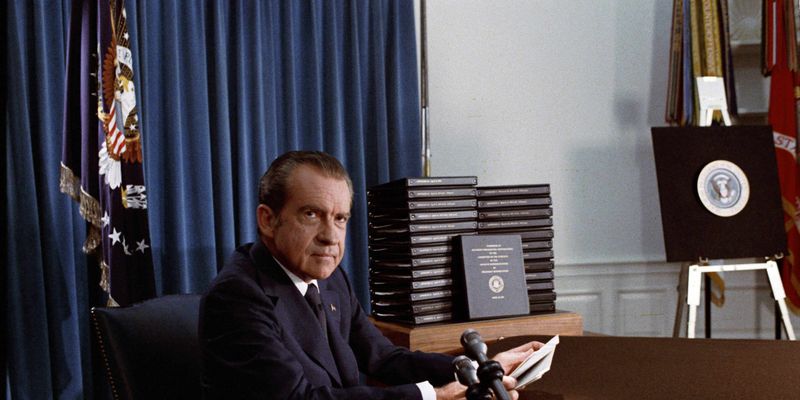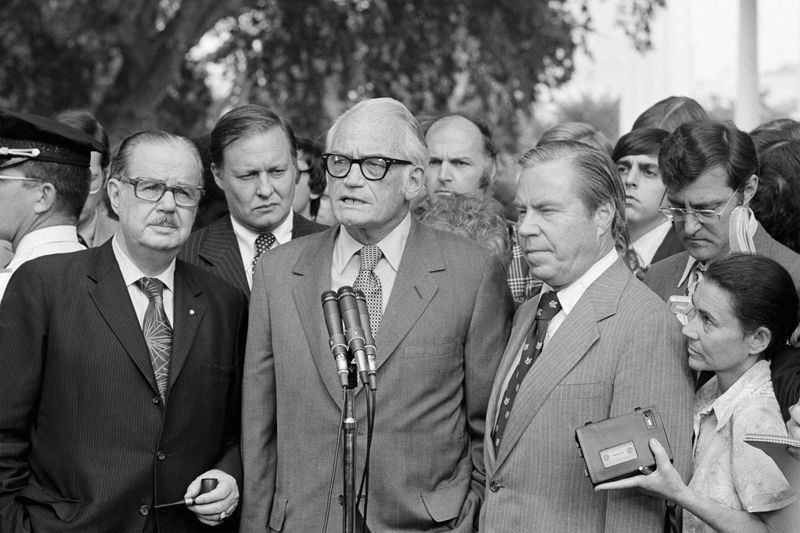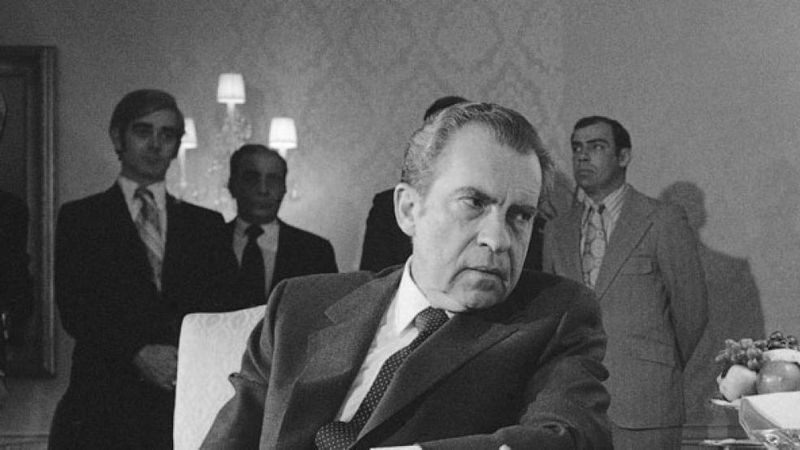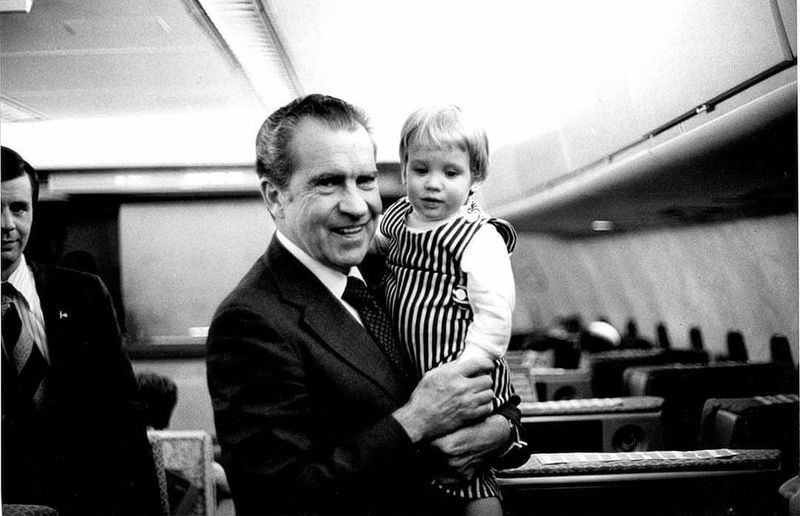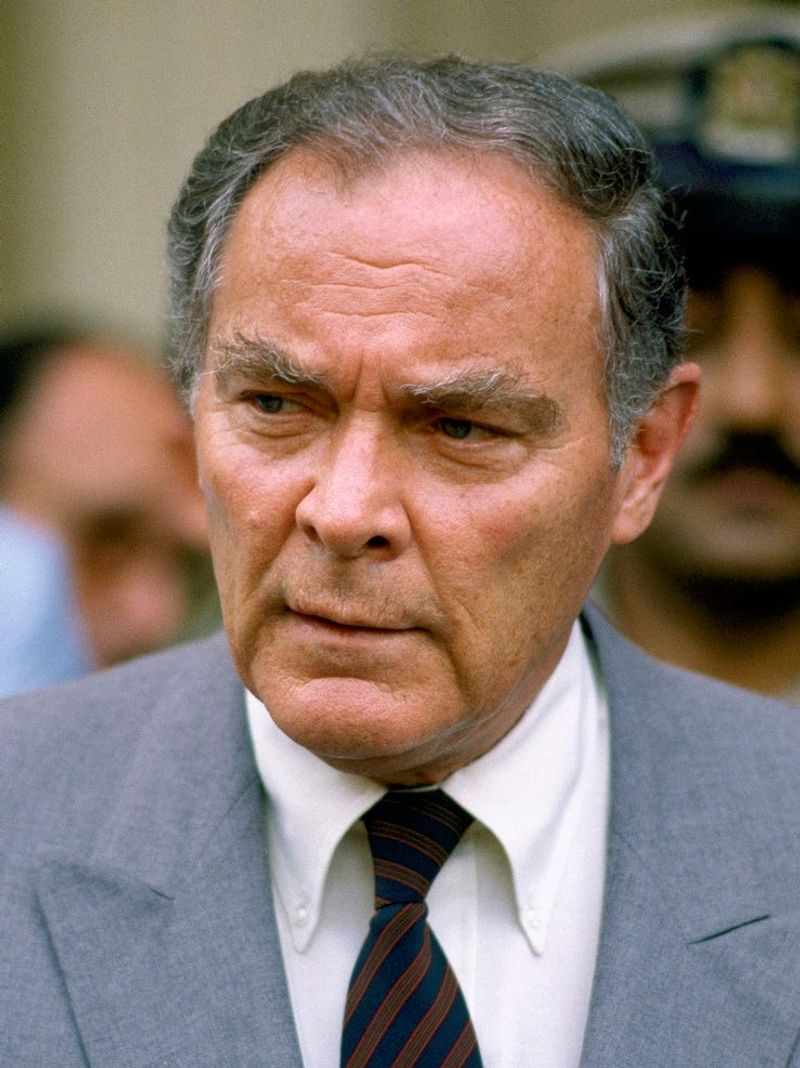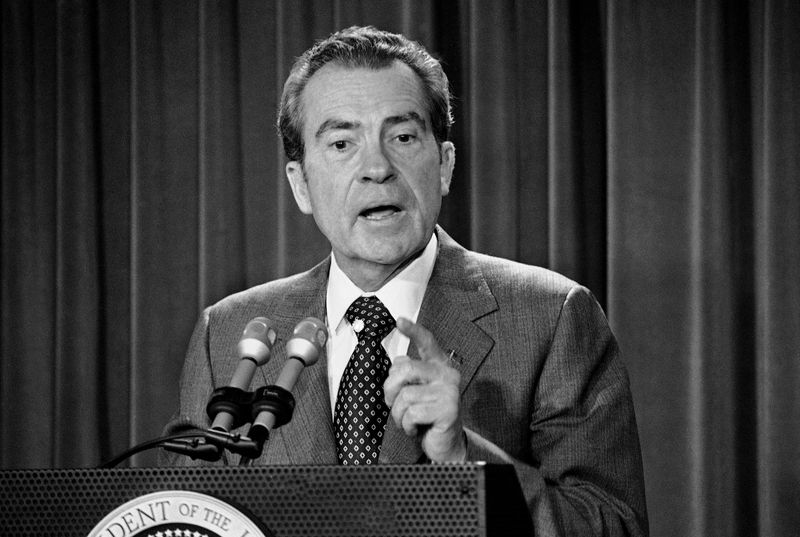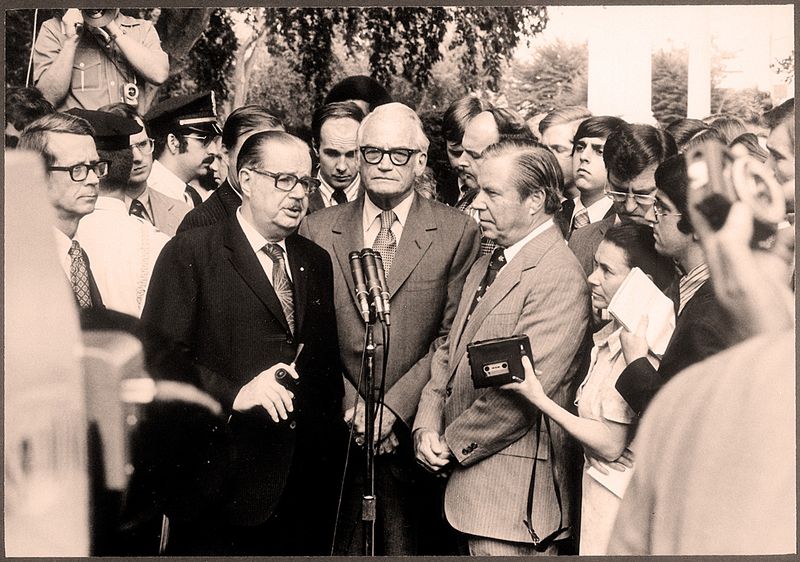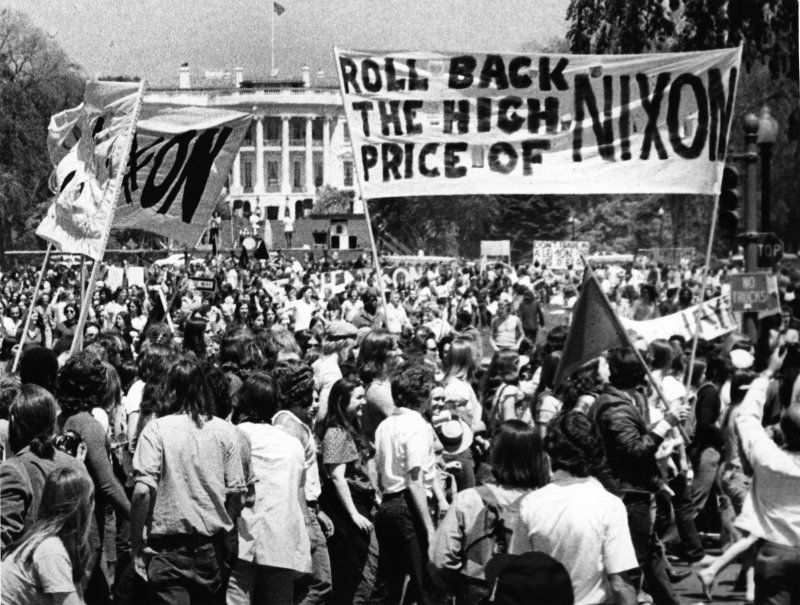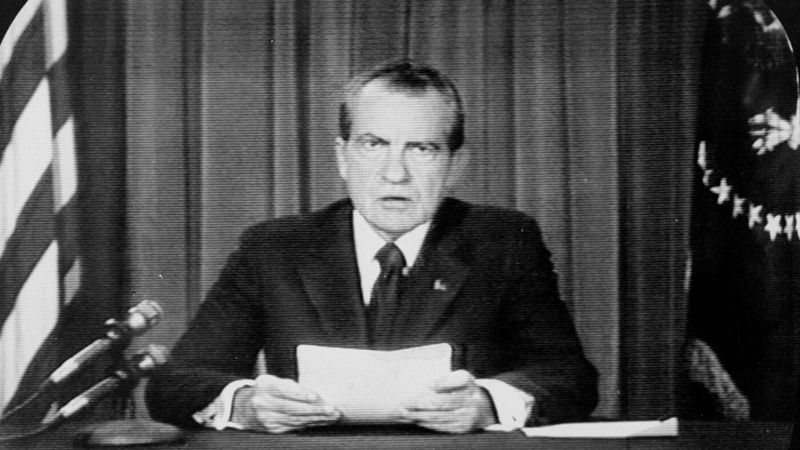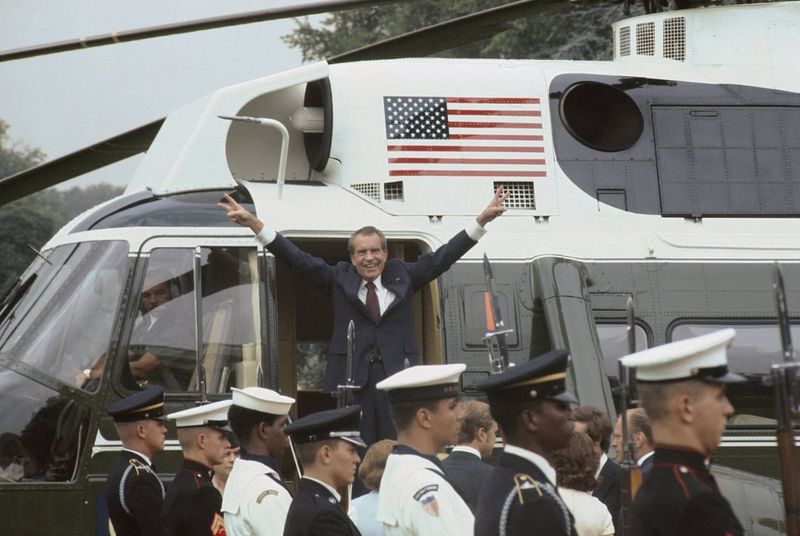In the summer of 1974, the walls of power began to crack. President Richard Nixon, once reelected in a landslide, was now a leader on the brink. With the Watergate scandal exploding, members of Congress, his own party, and the American public turned against him. What followed was a dramatic political unraveling unlike anything the nation had seen. Here are 10 pivotal moments from Nixon’s final 17 days in office—a day-by-day descent into the end of a presidency.
1. July 24, 1974 – The Supreme Court Deliverance
The Supreme Court’s unanimous decision in United States v. Nixon marked a significant turning point. With a legal gavel striking, the court ordered Nixon to release the White House tapes. This stunning rebuke shattered his hopes of maintaining secrecy.
In the dark corridors of power, this decision echoed like thunder, propelling the Watergate scandal into a new realm. The once-unbreakable walls of presidential authority began to crumble under the weight of justice.
Nixon’s confidence faltered, as this ruling signaled an inevitable unraveling. The American people watched, riveted, as history unfolded before their eyes.
2. July 25 – Nixon’s Defiant Stance
Nixon, still reeling from the Supreme Court’s decision, vowed to fight on. His determination was palpable, a fierce resolve burned within as he confided in close aides.
Despite the looming chaos, he declared he would “never resign.” For Nixon, the tapes symbolized more than mere recordings; they were artifacts of a legacy he was unwilling to tarnish.
Yet, even as he spoke these words, shadows of doubt began to creep in. The pressure mounted, and whispers of resignation started echoing in the halls of power.
3. July 26 – Cracks Among Allies
Top Republicans, including Senator Barry Goldwater and House Minority Leader John Rhodes, began meeting quietly. Behind closed doors, the support that once seemed steadfast began to waver.
Conversations were hushed and laced with urgency. The realization that Nixon’s grip on power was slipping became undeniable. Allies who once stood firmly by his side started questioning his leadership.
These secretive meetings signified a pivotal shift in political allegiance, as the GOP’s unity showed signs of cracking. The tide against Nixon was turning, setting the stage for an unprecedented political unraveling.
4. July 27 – Impeachment in Motion
The House Judiciary Committee’s approval of Article I: Obstruction of Justice was a monumental moment. In a room filled with anticipation, the vote passed, marking the official start of impeachment.
The air was charged with a sense of gravity, as lawmakers weighed the evidence and their consciences. It was a solemn step, one that would forever alter the course of Nixon’s presidency.
As the vote tally confirmed the decision, the political landscape shifted dramatically. The specter of impeachment loomed large, casting a long shadow over the corridors of power.
5. July 28 – Familial Tensions Rise
Inside the White House, tension simmered as First Lady Pat Nixon reportedly urged her husband to consider stepping down. Her concern was evident, a reflection of the anxiety gripping the nation.
The once-bustling halls grew quieter, as staff morale plummeted. Pat’s plea was more than personal; it echoed the sentiments of a nation yearning for resolution.
Amidst the turmoil, family dynamics played a crucial role in shaping Nixon’s decision-making process. The personal and political intertwined, adding complexity to an already fraught situation.
6. July 29 – Media Frenzy
The media landscape erupted as tapes and impeachment discussions dominated headlines. Networks launched special “Countdown to Impeachment” segments, intensifying the pressure on Nixon.
Journalists scrambled to cover every angle, turning the scandal into a national spectacle. The airwaves buzzed with speculation and analysis, capturing the nation’s attention.
The persistent media scrutiny magnified the gravity of the situation, leaving Nixon with little room to maneuver. Public opinion swayed, as the relentless coverage exposed every nuance of his unraveling presidency.
7. July 30 – The ‘Smoking Gun’ Revelation
A pivotal moment unfolded as a White House aide discovered the June 23, 1972 tape. This recording revealed Nixon discussing using the CIA to obstruct the FBI—a direct link to the cover-up.
The tape, a veritable “smoking gun,” shattered any remaining illusions of innocence. Within the White House, a palpable sense of dread settled in.
For Nixon, this revelation marked a profound shift, as the weight of undeniable evidence bore down upon him. The walls of his presidency, once unyielding, began to crumble irreversibly.
8. July 31 – Nixon Faces Reality
Nixon finally listened to the incriminating tape himself. As the damning words echoed through the room, his face reportedly turned pale.
The gravity of the situation hit him with full force. He knew that the end was near, an inevitability he could no longer deny.
This private moment of realization marked a turning point in his internal struggle. Nixon’s resolve, once unwavering, now wavered under the weight of undeniable evidence and mounting pressure.
9. August 1 – Collapse of Republican Support
Republican stalwarts like Goldwater and Rhodes faced the grim reality that Nixon had lost the Senate. The numbers were conclusive—a conviction in an impeachment trial was likely.
Their discussions took on a somber tone, as the GOP’s loyalty to Nixon crumbled. The political landscape shifted dramatically, with Republican support collapsing.
This realization prompted a strategic reassessment, as party leaders grappled with the implications of abandoning a sitting president. The countdown to Nixon’s resignation had truly begun.
10. August 2 – The Isolation Sets In
Inside the West Wing, a heavy silence enveloped the administration. Activity slowed to a crawl, and meetings became increasingly somber.
Staffers, once bustling with purpose, began packing their belongings. Nixon found himself increasingly isolated, a leader adrift in a sea of uncertainty.
As the walls closed in, the sense of inevitability grew stronger. The presidency, once defined by power and influence, now echoed with the quiet resignation of a chapter closing.
11. August 3 – Nixon Tells His Family
Nixon gathers his family, breaking the news that resignation may be inevitable. The room is filled with tension. His daughters, steadfast in their support, urge him to fight on. However, Nixon appears weary, his determination waning.
The emotional weight is palpable, with family bonds tested under crisis. This moment is both intimate and historical, setting the stage for what’s to come. The decision hangs heavy in the air, foreshadowing the end of an era.
In this solemn gathering, one can sense the gravity of leadership and the personal costs of political warfare.
12. August 4 – Haig Urges Nixon to Go
Chief of Staff Alexander Haig approaches Nixon with a firm recommendation: resign for the country’s sake. Haig’s demeanor is grave, underscoring the urgency of the situation.
Nixon listens, not voicing opposition but also not agreeing. This marks a turning point, where the reality of the political landscape starts to settle in.
Haig’s advice is not just professional but profoundly personal, echoing the sentiment of a nation on edge. His counsel is a critical piece in the unfolding drama of a presidency in peril.
13. August 5 – The Smoking Gun Tape Is Released
The infamous “Smoking Gun” tape hits the public domain, reverberating through Washington D.C. The contents are explosive, leaving no room for doubt about Nixon’s involvement.
This release is a seismic event, prompting even the staunchest supporters to reconsider their stance. The political fallout is immediate and unforgiving, marking a decisive blow to Nixon’s presidency.
This moment captures the essence of accountability, as the nation’s trust in its leader is irrevocably altered. The tape symbolizes the power of truth, unraveling a carefully constructed facade.
14. August 6 – The Final Tally
GOP senators convene in a closed meeting, delivering harsh news: Nixon’s support has crumbled beyond repair. The numbers for conviction in the impending Senate trial are insurmountable.
This grim assessment underscores the political reality Nixon faces, with allies turning into impartial jurors.
The tally represents a culmination of shifting loyalties and mounting evidence. The senators’ stern faces mirror the gravity of the situation, as they prepare to abandon a once-unassailable leader. This moment is a testament to the unforgiving nature of political survival.
15. August 7 – The Final Visit from GOP Leaders
A trio of Republican leaders—Goldwater, Rhodes, and Scott—arrive at the Oval Office for a pivotal meeting. Their message is clear and unyielding: it’s time for Nixon to step down.
Nixon listens, the weight of their words resonating deeply. His nod signifies an understanding, a silent acknowledgment of the inevitable conclusion.
This visit is a closing chapter, where personal loyalty and political necessity collide. The leaders’ solemn resolve reflects the endgame of a turbulent administration, sealing Nixon’s fate with quiet finality.
16. August 8 – Nixon Announces His Resignation
In a historic broadcast, Nixon addresses the nation to announce his resignation. The gravity of his words is matched by a somber tone, marking an unprecedented moment in U.S. history.
Nixon’s resignation speech is poignant, reflecting a mix of regret and resolution. The nation watches, witnessing the departure of a president under the shadow of scandal.
This address is not just a resignation; it’s a moment of reflection for a country grappling with its identity and values. Nixon’s farewell leaves an indelible mark on the American political landscape.
17. August 9, 1974 – Nixon Departs the White House
At precisely 9:35 a.m., Nixon leaves the White House for the last time as President, boarding Marine One. The iconic image of him raising his arms in the famous “V” sign is captured for posterity.
His departure is symbolic, marking the end of a turbulent presidency and the beginning of Gerald Ford’s tenure.
The scene is somber yet historical, highlighting the peaceful transition of power. Nixon’s exit is a visual metaphor for the resilience of American democracy, as the country turns a new page in its political history.
